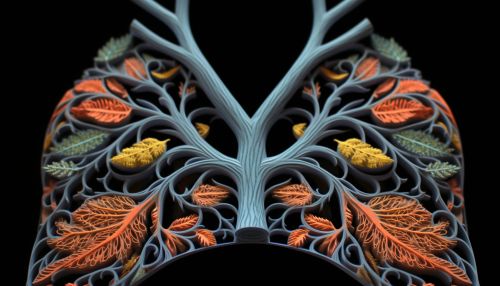Respiratory Failure
Definition and Types
Respiratory failure refers to a medical condition where the respiratory system fails in one or both of its gas exchange functions: oxygenation and carbon dioxide elimination. This condition can be classified into two types: Type 1 (hypoxemic) and Type 2 (hypercapnic).
Type 1 respiratory failure is characterized by a low level of oxygen in the blood (hypoxemia) without an increased level of carbon dioxide in the blood (hypercapnia). This type is often caused by pulmonary disorders that affect the normal oxygen and carbon dioxide exchange in the lungs.
Type 2 respiratory failure, on the other hand, is characterized by hypoxemia accompanied by hypercapnia. This type is often caused by conditions that affect the movement of air in and out of the lungs (ventilation), such as neuromuscular disorders or conditions that affect the chest wall.


Causes and Risk Factors
Respiratory failure can be caused by a variety of conditions that affect the lungs or the nervous system. These include chronic obstructive pulmonary disease (COPD), pneumonia, acute respiratory distress syndrome (ARDS), pulmonary embolism, and neuromuscular disorders such as amyotrophic lateral sclerosis (ALS) and myasthenia gravis.
Risk factors for respiratory failure include smoking, obesity, advanced age, and having a pre-existing lung or neuromuscular disease. Environmental factors such as exposure to certain chemicals or pollutants can also increase the risk of developing respiratory failure.
Symptoms and Diagnosis
The symptoms of respiratory failure can vary depending on the underlying cause and the severity of the condition. Common symptoms include shortness of breath, rapid breathing, confusion, and cyanosis (a bluish color of the skin and mucous membranes due to low oxygen levels in the blood).
Diagnosis of respiratory failure involves a physical examination, medical history, and various tests such as arterial blood gas analysis, chest X-ray, and pulmonary function tests. In some cases, a bronchoscopy or a lung biopsy may be required to determine the underlying cause of the condition.
Treatment and Management
The treatment of respiratory failure aims to correct the low oxygen and high carbon dioxide levels in the blood. This is often achieved through oxygen therapy, which can be administered through a nasal cannula, face mask, or a ventilator in severe cases.
In addition to oxygen therapy, treatment may also involve medications to treat the underlying cause of the condition, such as antibiotics for pneumonia or bronchodilators for COPD. In some cases, surgery may be required to treat conditions such as lung cancer or severe emphysema.
Management of respiratory failure involves regular monitoring of blood gas levels and lung function, as well as lifestyle modifications such as quitting smoking and maintaining a healthy weight.
Prognosis and Complications
The prognosis of respiratory failure depends on the underlying cause, the severity of the condition, and the patient's overall health. While some patients may recover completely, others may require long-term oxygen therapy or mechanical ventilation.
Complications of respiratory failure can include organ damage due to low oxygen levels in the blood, respiratory acidosis (a condition characterized by high carbon dioxide levels in the blood), and in severe cases, death.
Prevention
Prevention of respiratory failure involves managing risk factors and treating underlying conditions. This includes quitting smoking, maintaining a healthy weight, avoiding exposure to lung irritants, and managing chronic lung and neuromuscular diseases.
